Something someone someday had to do.
Komatsu decided to take on the job.
Something someone someday had to do.
Komatsu decided to take on the job.
In the aftermath of war and civil war, landmines and unexploded ordinance remain in many areas in Cambodia. Still today citizens continue to suffer severe injuries and even death from landmines. Buried in the vast tracts of land near the Thai border in the northwestern part of the country are countless anti-personnel landmines, preventing restoration and development. In order for people to return to the abandoned farmlands and deserted villages, our clearing of the landmines and making the land safe to live and walk upon must be our first task.
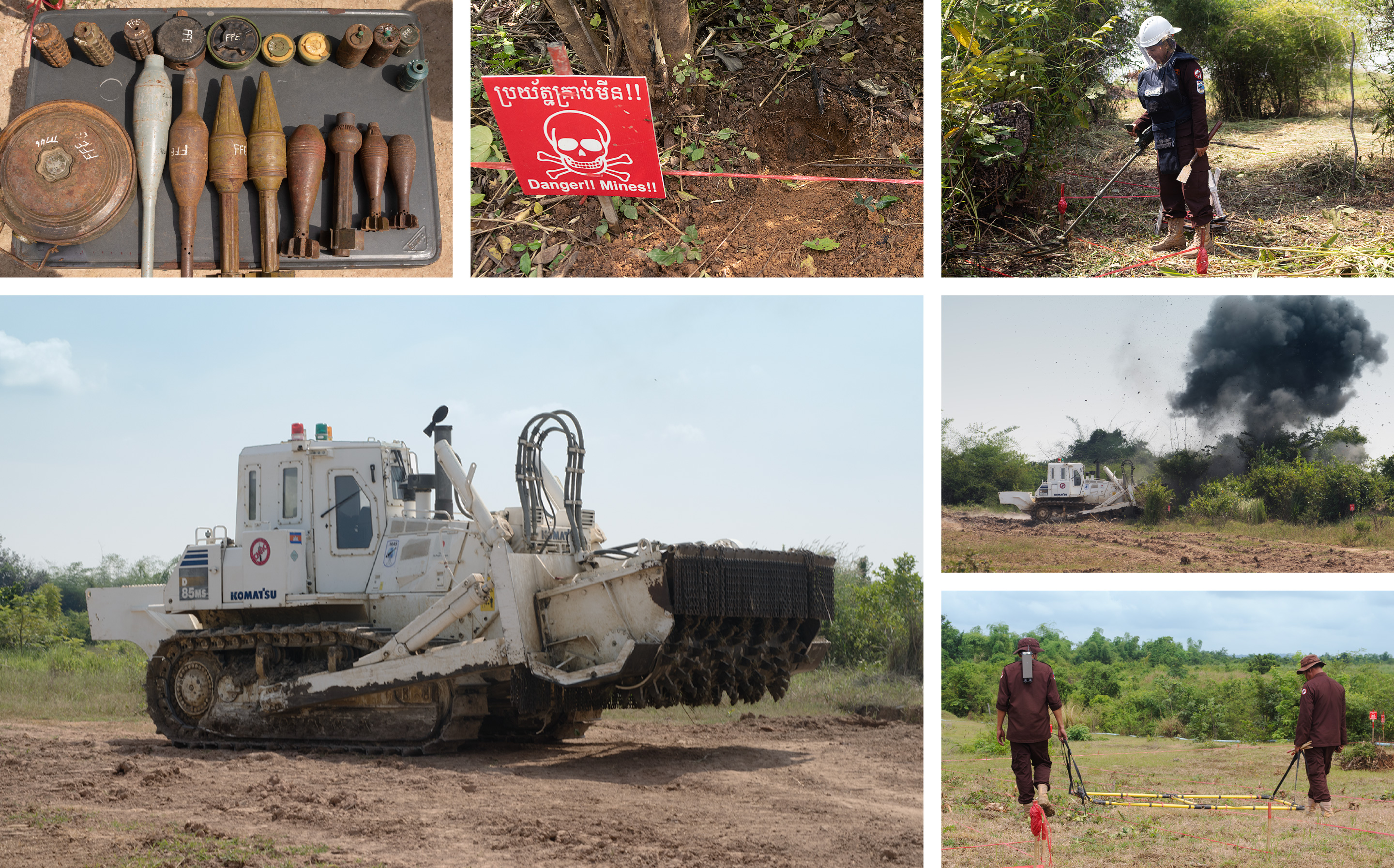
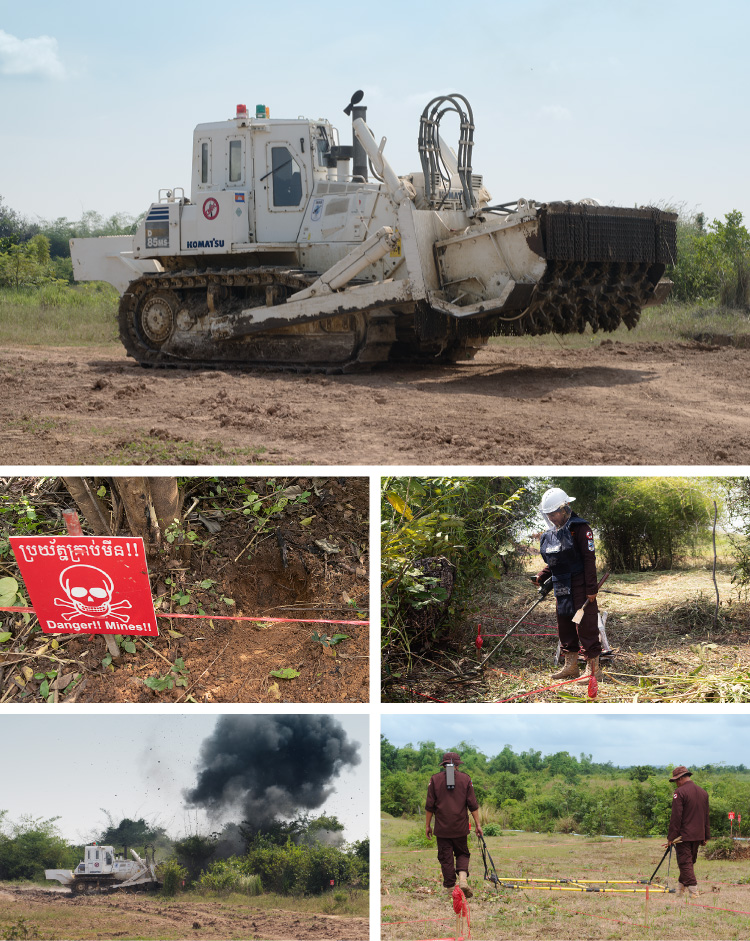
Until DM arrived, mine clearing had been done manually. Technicians would carefully excavate them with a stick or shovel and then remove them for disposal one by one. It was painstaking, time-consuming and posed high risk to the lives of the workers.
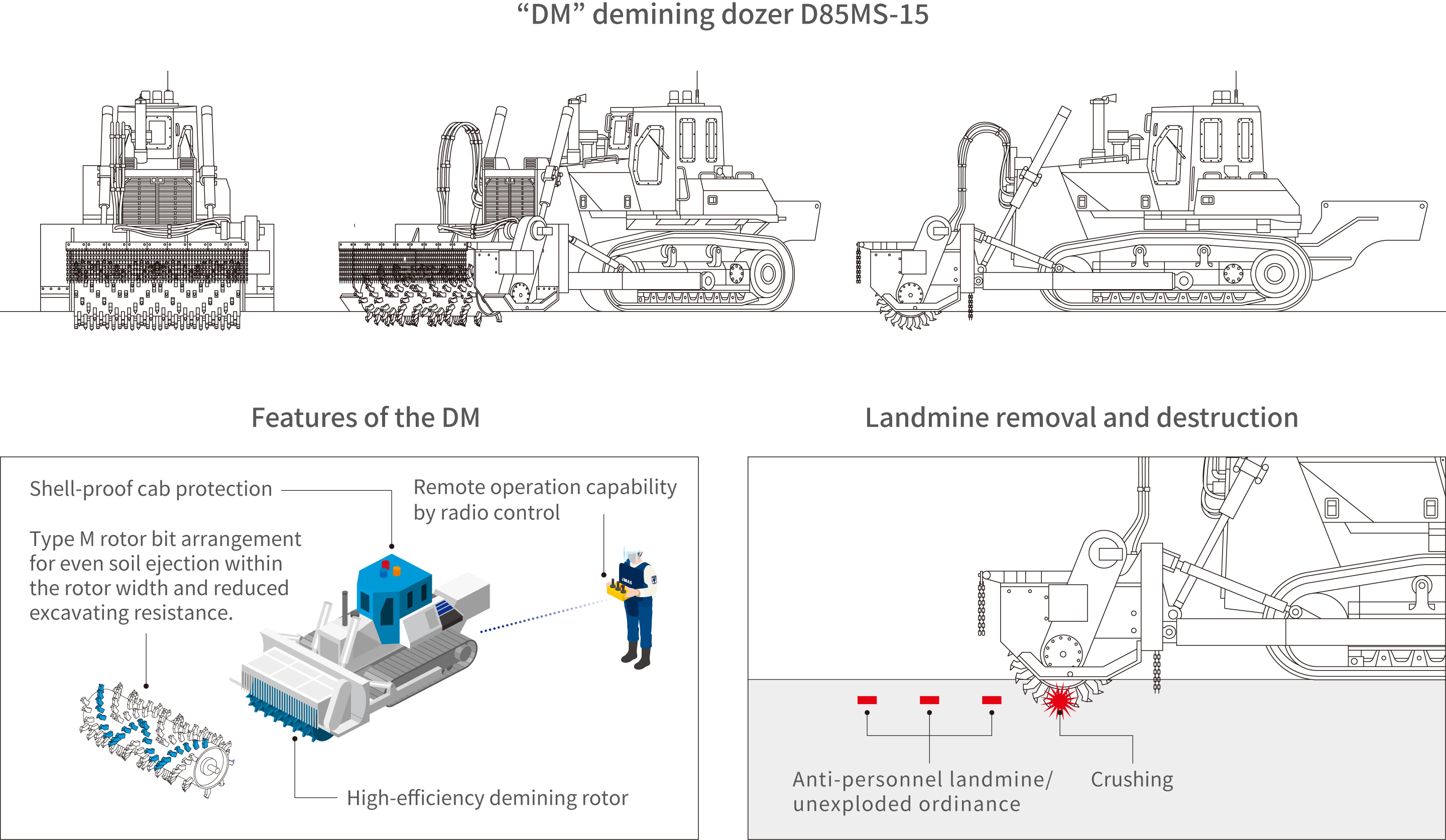
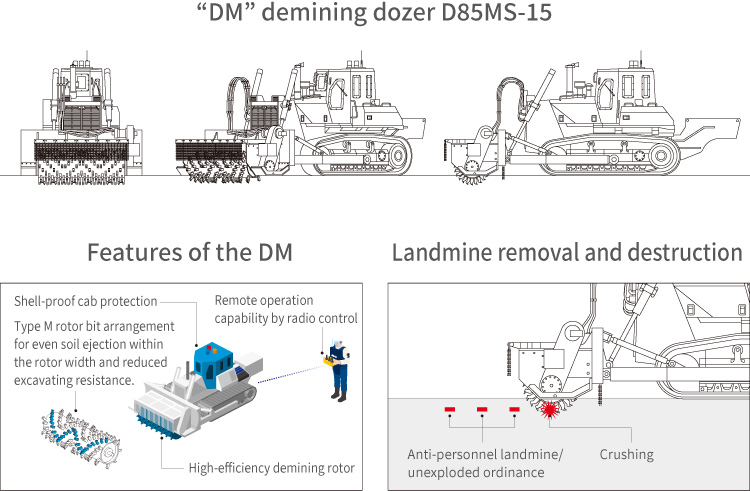

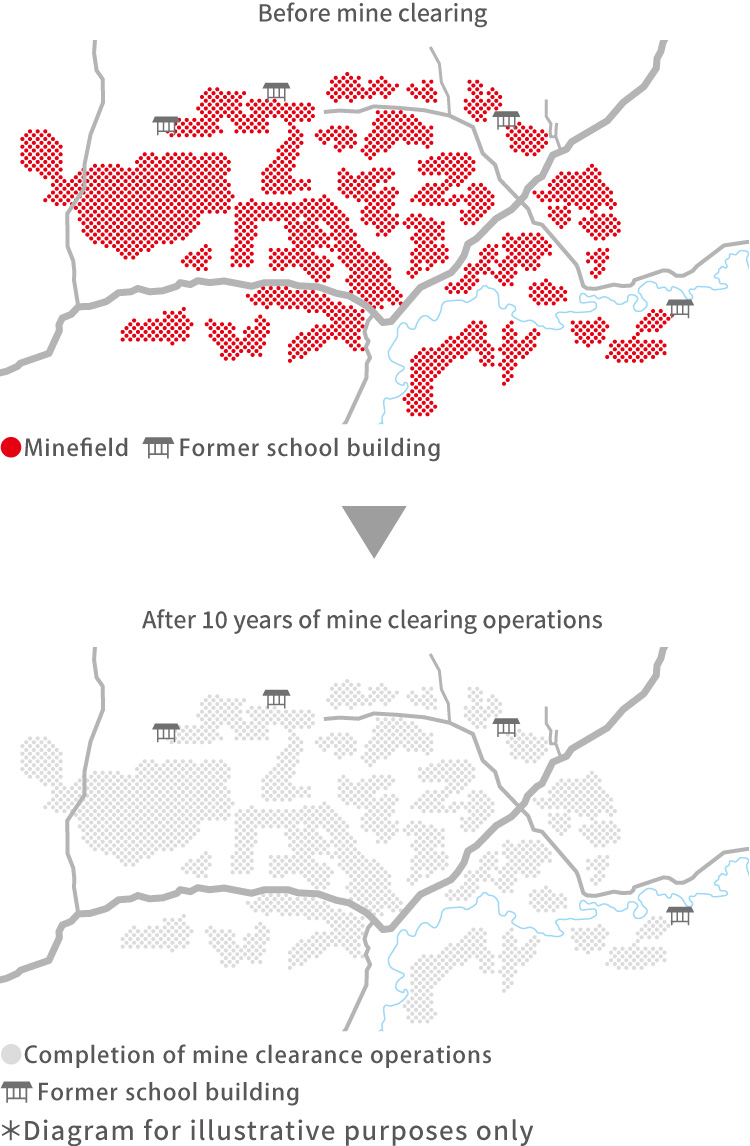
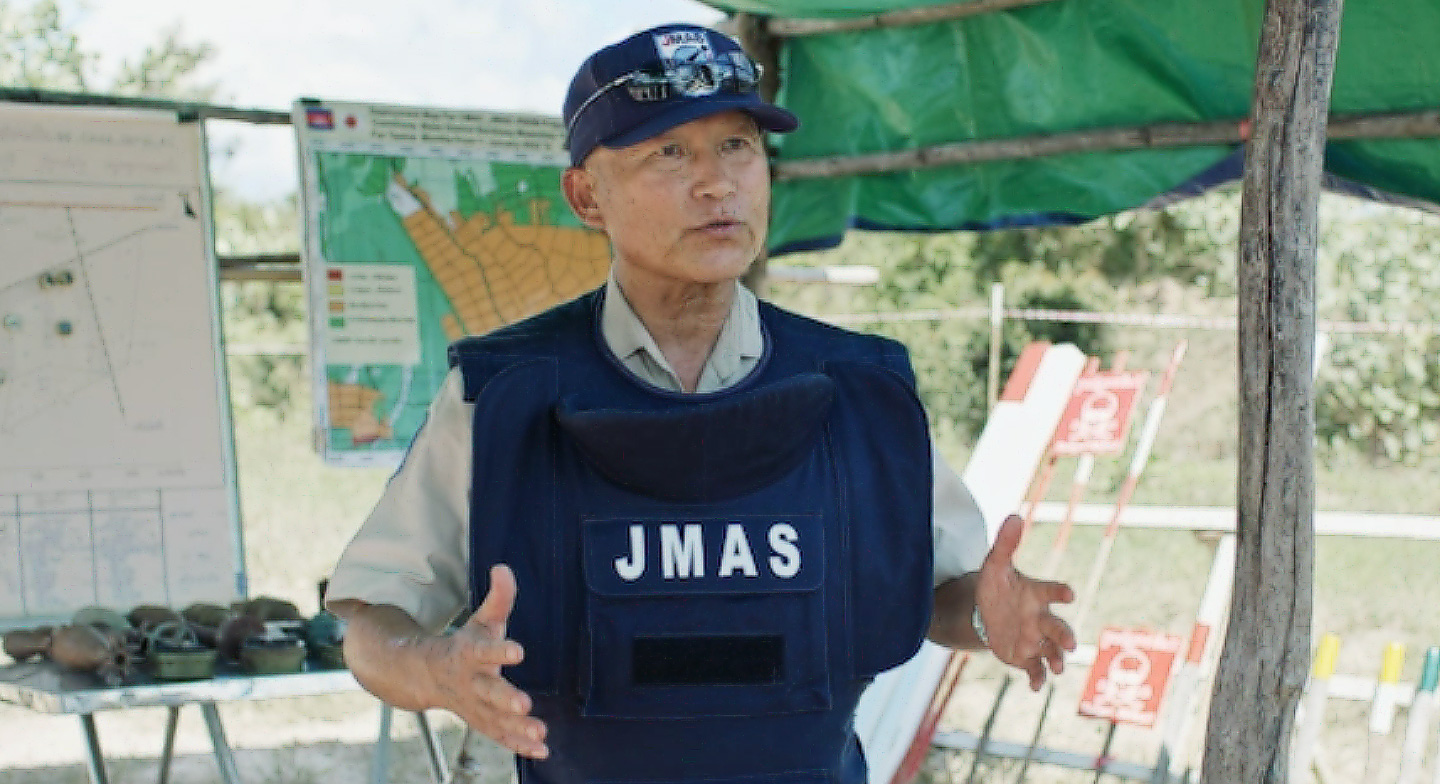
Mr. Masahito Nakano,
JMAS Technical Advisor
“Uncounted anti-tank and anti-personnel mines remain hidden in the earth. Before we near the minefields, we first ask the locals what kind of battles were fought there. We then decide on the optimum method for clearing the mines. This decision involves careful consideration of the influence of local climate conditions, whether to perform clearing manually or use a mine clearing machine. Every day we are working hard to achieve the goal of the Ottawa Treaty – a mine-free Cambodia by 2025.”
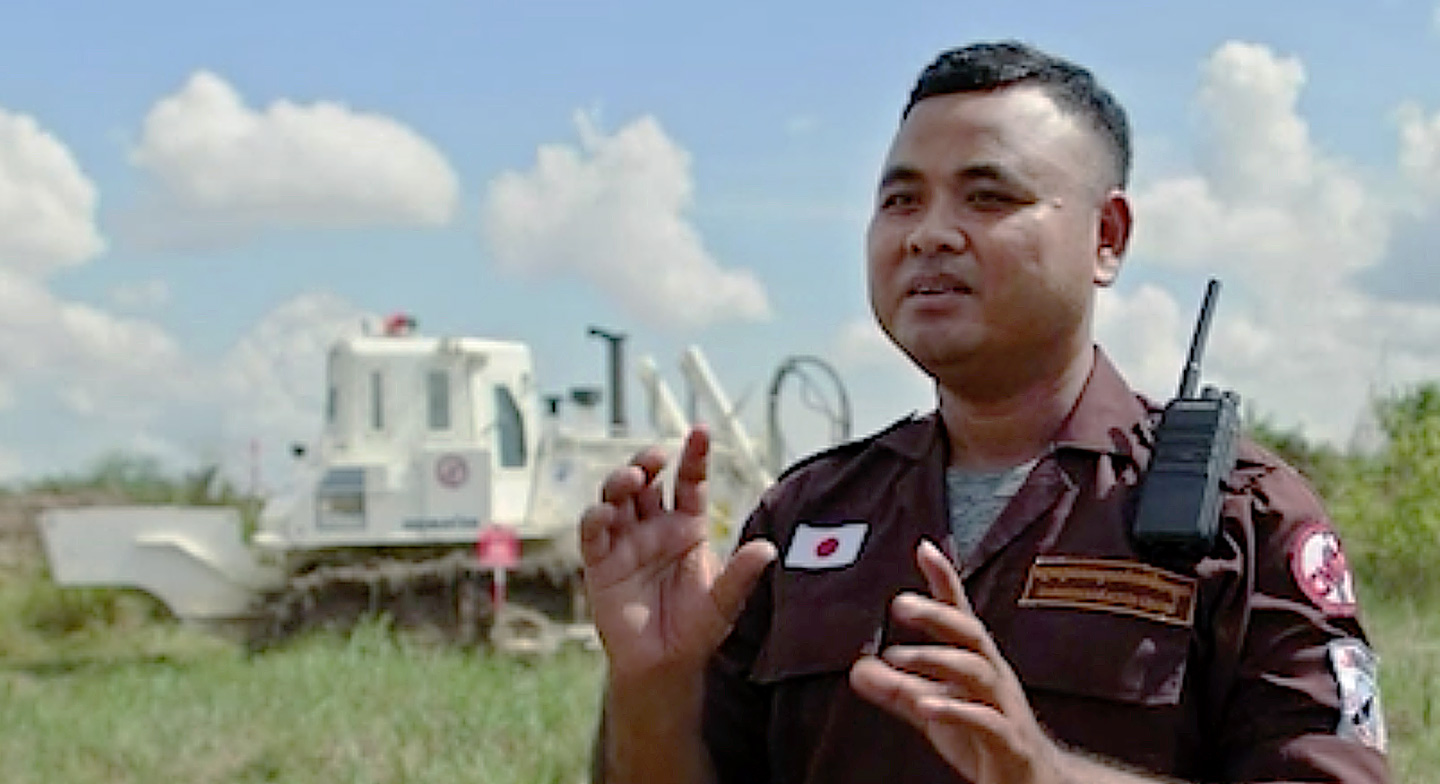
Mr. Oeun Maroeun,
CMAC Mechanic & DM Operator
“I’m not only a demining dozer operator, but also a mechanic. In one day, I often clear as much as 2,000 to 3,000 square meters of land. Before I begin my job, our survey team has already examined the area. In dense forest, their work can be especially dangerous with mines exploding occasionally during the survey. After the land is cleared of landmines, I can’t help but smile when I see people moving back to the land that has been cleared of landmines and grow rice paddies and fields.”
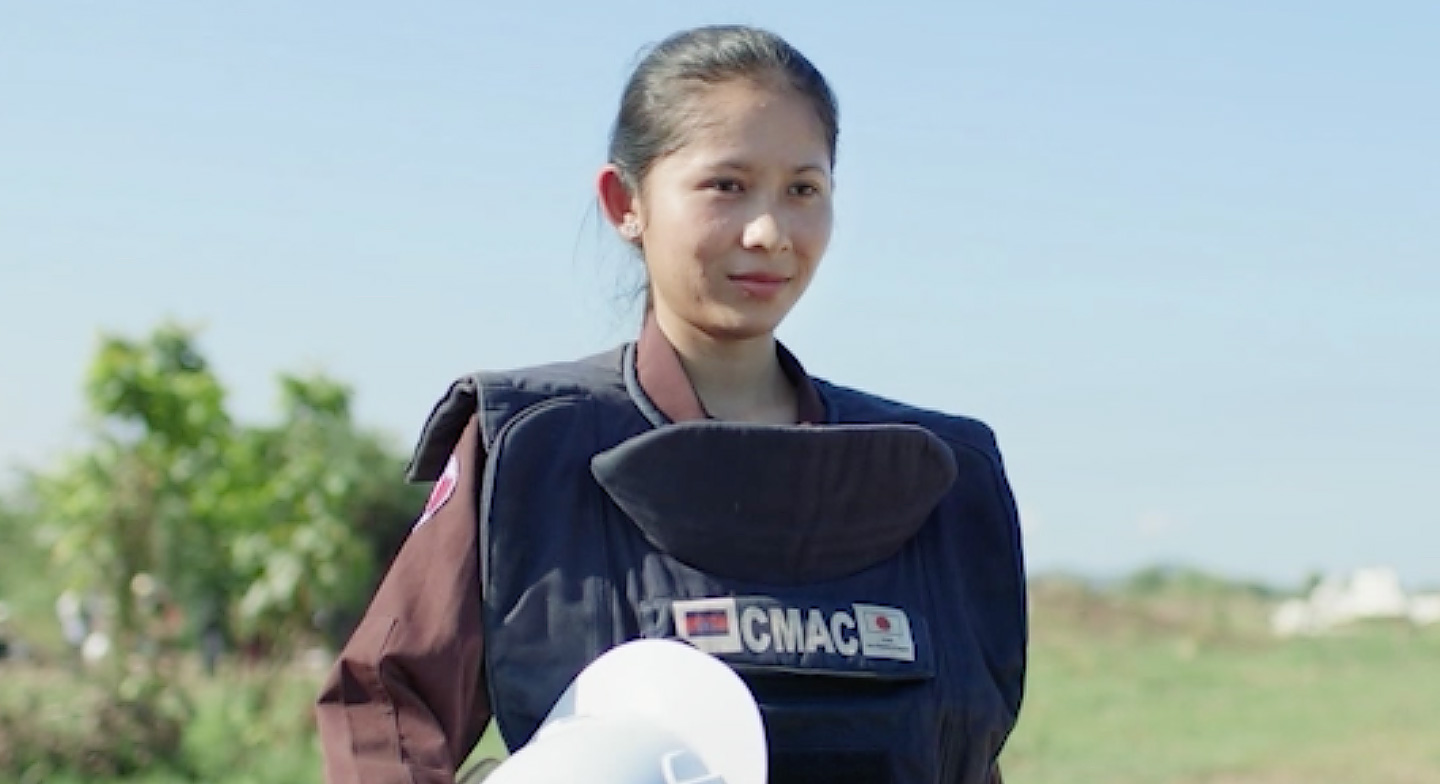
Ms. Son Sokhingmarinat,
CMAC Deminer
“Our job is to detect mines with detectors. After the other staff have finished clearing away brush and grass, we put on our protective vests and helmets and get to work. It's a little scary when the metal detector signals that it found something. In that instant, we don’t know if it’s a landmine or something else. Most of the time, it is just small metallic debris. I would like to mention how happy and grateful we are for Komatsu’s construction of schools and other support for the children of my country.”
Affiliations and titles are as of the time of the interview (2022).




